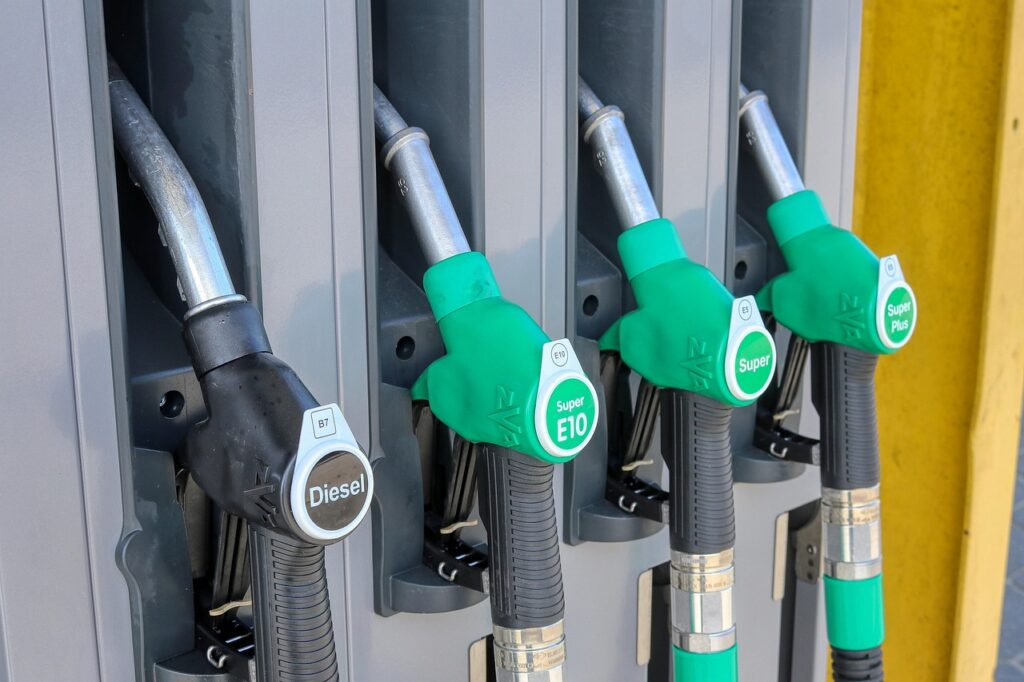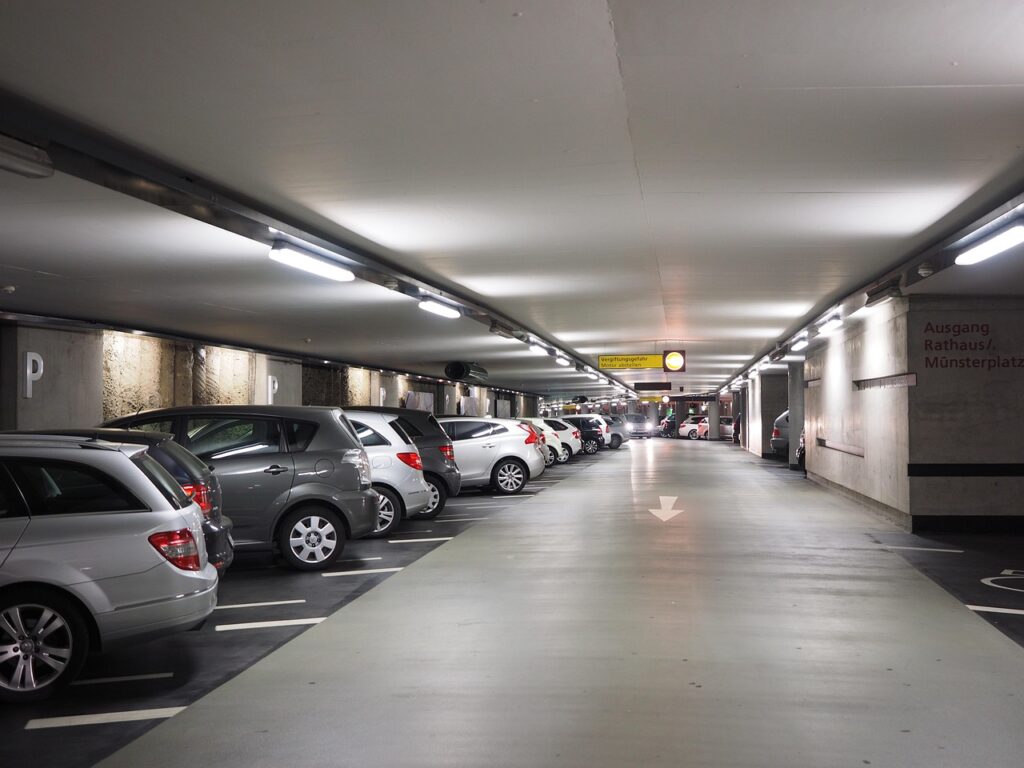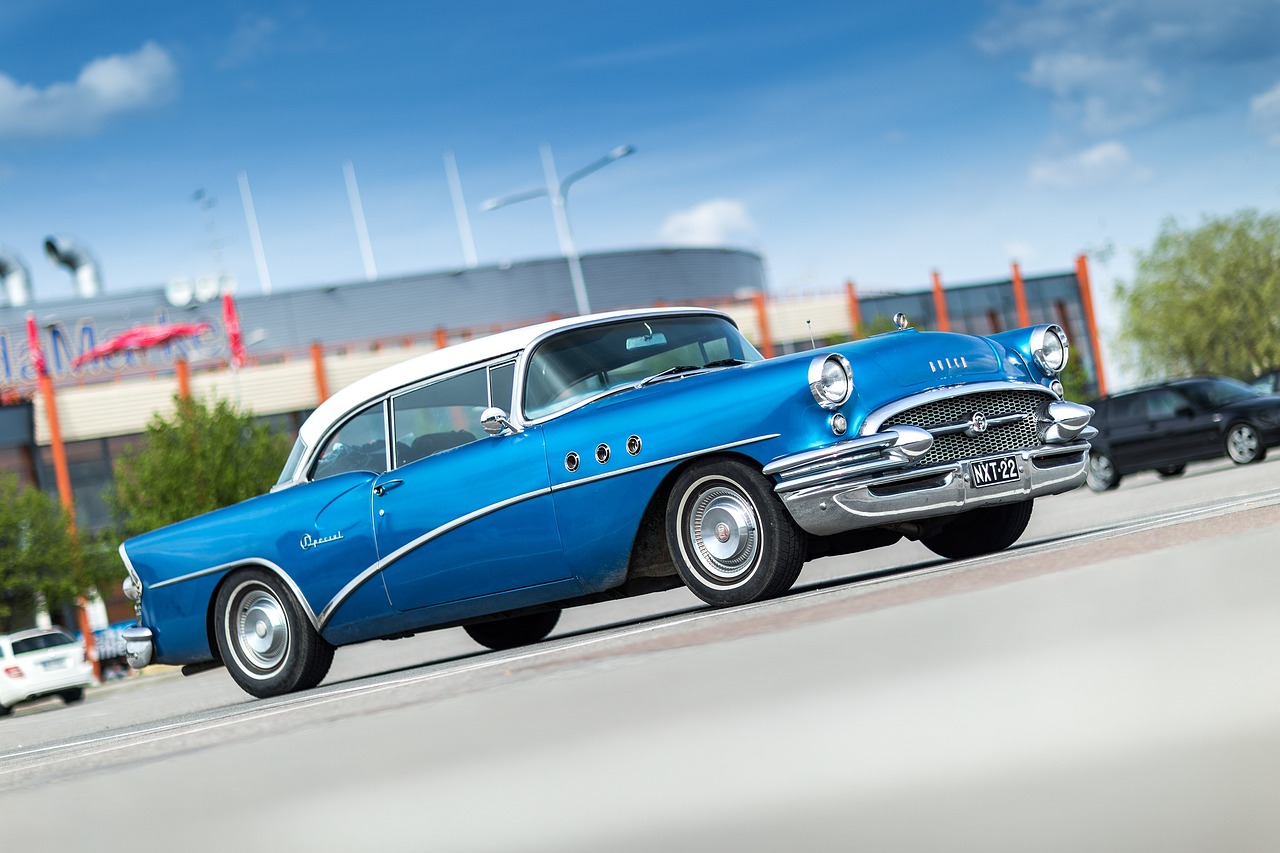
Buying a car often feels like a significant accomplishment, a milestone that promises freedom and convenience. The gleam of a fresh paint job, the allure of a low sticker price, or the comfort of a manageable monthly payment can easily sweep us away. Yet, what many consumers fail to realize is that the sticker price is merely the opening chapter of a much larger financial story. Beyond the initial transaction lies a labyrinth of hidden costs, often unanticipated, that can steadily erode a budget and transform what seemed like a smart purchase into a long-term financial drain.
For anyone making a wise financial decision, it is absolutely crucial to look past the showroom shine and delve into the true cost of ownership. The landscape of car expenses has only become more complex, with the average cost to own and operate a new car in 2024 skyrocketing to $12,297 annually. This isn’t just about high-interest rates or soaring insurance premiums; it encompasses a wide array of expenses that, individually, might seem minor but collectively can create a substantial burden on your wallet.
This comprehensive guide aims to peel back the layers of illusion surrounding car ownership. We’ll explore the often-overlooked financial pitfalls that can turn your prized possession into a money pit. From the moment you drive off the lot to the everyday realities of being on the road, understanding these hidden expenses is key to budgeting realistically, avoiding nasty surprises, and ultimately making choices that serve both your needs and your long-term financial health. Let’s uncover the truths behind owning those shiny wheels.

1. **Depreciation: The Silent Wealth Eroder** Perhaps the most significant, yet frequently overlooked, hidden cost of car ownership is depreciation. This isn’t an out-of-pocket expense in the traditional sense, but it represents a real and substantial loss of wealth that impacts your financial standing from day one. The moment a new car rolls off the dealership lot, its value instantly plummets, often by as much as 20% in the first year alone. This immediate and substantial reduction in value is a critical factor that many buyers fail to fully grasp when captivated by the allure of a brand-new vehicle.
The rapid decline in value doesn’t stop after the first year; it continues steadily. According to Kelley Blue Book, a car will likely drop in value by at least 30% within its first two years of ownership. By the time a vehicle reaches roughly five years old, it may have lost over 50% of its initial value. For a new car purchased at the average 2025 price of approximately $48,000, this means a staggering loss of over $26,000 in just five years. This dramatic erosion of value makes vehicles a challenging asset from a wealth-building perspective.
Understanding depreciation is vital when considering financing options. This significant devaluation is a major reason why financial experts strongly discourage financing a new car for more than 60 months, or five years. If your loan term extends beyond this period, you could easily find yourself owing more on the car than it’s actually worth, a situation known as being “upside down” on your loan. This can create a precarious financial position, making it difficult to sell or trade in the vehicle without incurring further debt.
Even if you plan to drive your car “into the ground,” its limited resale value is a real part of the cost of ownership. When unexpected repairs or life changes force an earlier sale, you might discover your vehicle is worth little or nothing in trade-in value, wiping out any perceived initial savings. To minimize this financial hit, a pragmatic approach is to consider purchasing reliable used cars that have already undergone their most significant depreciation, allowing someone else to absorb the steepest initial loss.
2. **Insurance Premiums: A Soaring Annual Burden** Car insurance is an undeniable necessity, mandated by law in almost every state. However, the cost associated with maintaining adequate coverage is a substantial and ongoing expense that can fluctuate dramatically. Many drivers have observed that insurance premiums continue to rise faster than wage growth, placing an increasing strain on household budgets. This is a burden that touches nearly every car owner, highlighting its significance as a hidden cost that demands careful consideration and budgeting.
The financial impact of insurance has become particularly pronounced in recent years, with car insurance rates soaring an alarming 24% in 2023. This surge was primarily driven by rising repair costs for increasingly complex vehicles, the growing frequency of natural disasters, and an uptick in car accidents. The average national premium for a full-coverage policy now stands at $2,019 per year, translating to approximately $168 per month. For those opting for state-minimum liability insurance, the average is $1,154 annually, though this offers significantly less protection in the event of an accident.
Several factors contribute to the variability of insurance premiums. A driver’s record, their geographical location, and the specific make and model of the vehicle all play a crucial role. For instance, younger drivers or those with less-than-perfect driving histories typically face higher rates. Moreover, older or cheaper cars might surprisingly incur higher premiums if they lack modern safety features, making them riskier in the eyes of insurers, or if they have higher theft rates, pushing up the associated costs. Even credit scores can impact auto insurance rates, adding another layer of complexity.
Given these escalating costs and influencing factors, a proactive approach to insurance is highly recommended. It’s always a good idea to obtain an insurance quote before committing to a car purchase, factoring these premiums into your overall budget. Shopping around for quotes annually can help secure the best deal, and don’t hesitate to inquire about potential discounts for safe driving or bundling multiple policies. Sometimes, investing slightly more upfront in a safer vehicle can lead to lower insurance costs in the long run due to improved safety ratings.

3. **Maintenance and Repairs: The Unpredictable Drain** Beyond the predictable expenses, every car owner must contend with the often-unpredictable costs of maintenance and repairs. While regular upkeep is essential for keeping a vehicle running efficiently, the cumulative cost can quickly add up, transforming a seemingly affordable car into a continuous financial drain. The Federal Reserve even tracks motor vehicle parts and equipment costs, which have notably skyrocketed since the end of the COVID-19 pandemic, underscoring the broader economic impact of these expenses.
The figures highlight the scale of this hidden cost. In 2023, drivers averaged 9.83 cents per mile driven on maintenance, repairs, and tire replacement, according to AAA. For the average American driving 15,000 miles annually, this translates to an estimated $1,474 per year dedicated to car maintenance. Another reported average stands at $762 per year, or about $66 per month. These costs are not static; they tend to increase significantly as cars age, especially if preventive maintenance is neglected.
Older vehicles or those acquired as high-mileage bargains are particularly susceptible to frequent repairs. Common wear and tear parts, such as brakes, alternators, and radiators, are prone to failing more often as a car ages. Even minor repairs can accumulate into a significant sum, while major fixes like transmission or engine work can swiftly eclipse any initial savings made on a budget purchase. Furthermore, cheap cars often lack a warranty, leaving owners to pay entirely out of pocket for these inevitable expenses.
Modern vehicles, while offering enhanced safety and comfort, introduce a new dimension to repair costs. Packed with sophisticated technology like touchscreens, backup cameras, and lane sensors, these components are far from cheap to fix. A single cracked sensor could lead to a hefty repair bill that older, simpler vehicles never incurred. To mitigate these financial shocks, it’s crucial to budget for maintenance proactively, perhaps by setting up a dedicated “sinking fund” for repairs. Researching the maintenance and repair costs of specific vehicles, and consulting with local independent mechanics, can reveal significant cost variations between different makes and models, allowing for a more informed purchasing decision.

4. **Fuel Costs: A Constant, Fluctuating Expense** The expense of fueling a vehicle is a regular, often substantial, and frequently fluctuating cost that affects nearly every driver. Whether you’re filling up a gas tank or charging an electric vehicle, this ongoing outlay can significantly impact your monthly budget, often consuming a larger portion of household expenses than anticipated. In many cases, gasoline costs can even surpass monthly car insurance premiums, making it an expense that demands close attention.
For drivers of traditional gasoline-powered vehicles, the costs can be considerable. The average car in America, achieving 25 miles per gallon in 2025, will cost a typical American driver traveling 15,000 miles per year approximately $2,100 annually in fuel, assuming a price of $3.50 per gallon. Other data suggests Americans spend an average of $2,449 per year on gasoline alone, or roughly $204 per month. Older, less-efficient models or poorly maintained vehicles can consume even more fuel, adding hundreds of dollars to annual expenses as gas prices continue to fluctuate.
While hybrid and electric vehicles (EVs) are often touted for their fuel efficiency, they introduce their own set of costs. Charging an EV at home is generally the most economical option, typically costing between $10 and $20 to fully charge a 75 kWh battery. However, public fast chargers can be surprisingly expensive, with prices varying wildly. A good deal might be under $0.45 per kilowatt-hour, but some stations charge upwards of $0.65 per kWh. This can make public charging just as, if not more, costly per mile driven than gasoline, depending on the circumstances.
Despite the potential for expensive public charging, the vast majority of EV drivers primarily charge at home, resulting in annual savings of hundreds of dollars in fuel costs compared to gasoline cars. Regardless of the fuel type, consistently tracking your mileage and allocating specific funds for these expenses is a smart financial strategy. Before purchasing any vehicle, it’s wise to compare its fuel economy ratings; sometimes, a slightly higher upfront investment in a more efficient model can lead to significant savings on fuel expenses over the long term.
5. **Financing and Interest: The True Cost of Borrowed Money** For many, outright cash payment for a car is not feasible, making financing an integral part of the car-buying process. However, the interest accrued on auto loans represents a significant hidden cost that can substantially inflate the total price of your vehicle. The current financial climate, characterized by higher car prices and elevated interest rates, means that auto loan interest payments are soaring, turning what appears to be a cheap deal into an expensive long-term commitment.
The prevailing interest rates in 2025 paint a clear picture: the average APR for a new car loan is 9%, while used car loans average an even higher 13%. Financing a new car over a typical 60-month term can result in thousands of dollars in interest, unless a buyer is able to take advantage of specific low-APR financing offers. This financial burden is exacerbated by extended loan terms, as evidenced by nearly 20% of new car buyers now taking out loan terms up to seven years, leading to monthly payments of $1,000.
Extending a loan term to 72 or even 84 months, while seemingly making monthly payments more manageable, causes interest costs to skyrocket, making the car significantly more expensive in the long run. Lenders often impose higher interest rates for older vehicles or those with high mileage, or may even refuse to finance them entirely, pushing buyers towards less favorable loan terms. This makes careful comparison and shopping around for the best financing rates absolutely crucial.
To safeguard your financial health, it’s advisable to aim for loan terms of four years or fewer, accompanied by at least a 20% down payment. Financial experts suggest keeping total auto costs, including your loan payment, within 20% of your monthly take-home pay. If a car cannot be comfortably paid off within three or four years, it’s a strong indicator that the vehicle might be beyond your true affordability, underscoring the importance of rigorous due diligence before signing any paperwork.
6. **Taxes, Registration, and Fees: The Government’s Recurring Slice** Beyond the purchase price and ongoing operational costs, car ownership comes with a myriad of governmental charges that are often overlooked until they become due. These state and local taxes, registration fees, and annual renewal fees can accumulate rapidly, adding a significant layer to the overall cost of owning a vehicle, especially if they haven’t been factored into the initial budgeting process. Depending on the state and vehicle type, these expenses can range from hundreds to even thousands of dollars per year.
Each state implements its own unique structure of vehicle-related taxes and fees, leading to wide variations across the country. Sales tax is a primary upfront cost, but this is often followed by annual registration fees and renewal charges. Some states impose annual property taxes on vehicles, introducing another consistent expense. Moreover, with the rise of electric vehicles and hybrids, many states have introduced additional annual registration fees, typically ranging from $50 to over $200, to compensate for the lost gas tax revenue that traditionally funds road maintenance.
A particularly insidious aspect of these governmental requirements involves emissions and safety inspections. Many states mandate regular inspections, and older or cheaper cars are considerably more likely to fail these tests. A failed inspection can lead to costly repairs that must be completed before the vehicle can be legally driven again. In severe cases, persistent failures might even necessitate junking the car entirely, erasing any perceived savings from its initial low purchase price and adding to your financial woes.
Thorough research into local regulations and a proactive approach to budgeting for these recurring expenses are indispensable. Before purchasing any car, especially a budget vehicle, it is essential to investigate your state’s specific tax and fee structure and estimate the potential cost of likely repairs that could arise from inspection failures. A car that cannot pass inspection is not merely an inconvenience; it’s a significant financial liability and far from a bargain.

7. **Safety Risks and Medical Bills: The Ultimate Cost** While less tangible than monthly payments or repair bills, the potential for safety risks and subsequent medical costs represents a profound and often devastating hidden expense of car ownership. This consideration is particularly relevant when evaluating older or cheaper vehicles, which frequently lack the advanced safety features that have become standard in newer models. Such compromises can have far-reaching and life-altering financial implications that extend well beyond the immediate cost of the vehicle.
Many budget cars come without crucial modern safety features like advanced airbag systems, anti-lock brakes (ABS), or electronic stability control (ESC). In the unfortunate event of an accident, the absence of these protective technologies significantly increases the risk of injury to occupants. The consequences can be severe, leading to substantial medical bills for treatment, rehabilitation, and long-term care. These costs can quickly dwarf any savings made on a lower car payment, becoming an overwhelming financial burden.
Beyond direct medical expenses, injuries sustained in an accident can also result in lost wages from time off work, further compounding the financial strain. For individuals or families already operating on tight budgets, such unforeseen circumstances can lead to economic hardship and even debt. The human toll, including pain, suffering, and a diminished quality of life, is, of course, immeasurable, underscoring that safety should always be a paramount concern.
Given these profound risks, the importance of prioritizing safety cannot be overstated. Before finalizing a car purchase, it is imperative to thoroughly research the vehicle’s crash test ratings and its suite of safety features. Investing in a vehicle equipped with robust safety technologies is not merely an upgrade; it is an investment in protecting your health, your well-being, and ultimately, your financial future. The peace of mind that comes with a safer vehicle is truly priceless.
Having explored the more immediate and tangible financial burdens of car ownership, it’s clear the initial purchase price is merely the start. Many layers of hidden costs persist, often overlooked until they become unavoidable realities. These less obvious, yet significant, financial commitments can subtly impact your budget and reshape the true cost of owning a vehicle. We now delve into these nuanced financial traps, providing a comprehensive understanding of car ownership in today’s intricate economic climate.
8. **Opportunity Cost of Capital: The Unseen Investment You’re Missing**Beyond direct financial outlays, car ownership introduces the concept of opportunity cost—a hidden expense representing the value of the next best alternative use of your money. When capital is tied up in a depreciating asset like a car, particularly a new one, you’re not just losing value through depreciation; you’re also forfeiting potential gains from other investments. This non-cash cost is often one of the biggest, yet most overlooked, financial implications of vehicle acquisition. It underscores the financial implications of choosing to spend rather than invest.
Consider a scenario where a consumer pays $48,000 cash for a new car. While they gain the utility of the vehicle, the car’s value is expected to plummet to $24,000 after five years, resulting in a direct loss of $24,000. However, the financial impact extends beyond this depreciation. If that same $48,000 had been invested in a growth-oriented asset, such as an S&P 500 index fund, at an average annual return of 10% over the same five-year period, the investment could have grown to approximately $79,000.
This comparison reveals a staggering $55,000 in lost opportunity cost. From a strictly financial standpoint, allocating significant capital to a depreciating asset like a car places one far behind compared to investing in assets designed for wealth accumulation. While the enjoyment and utility of a vehicle are undeniable, understanding this financial trade-off is crucial for making truly informed long-term financial decisions. It’s a powerful reminder that every spending choice has an alternative investment path.

9. **Uninsured Motorist Coverage: Protecting Yourself from Others’ Negligence**While car insurance is a legal mandate in nearly every state, the reality is that a significant portion of American drivers operate their vehicles without it. According to SimplyInsurance, approximately 12.6% of American drivers, totaling 32 million individuals, lack car insurance. In some states, such as Mississippi, this rate can be as high as 29.4%, presenting a considerable risk to insured motorists on the road. This widespread non-compliance creates an additional, often unexpected, financial burden for responsible car owners.
Fewer than half of states currently mandate drivers to carry uninsured motorist (UM) insurance. This coverage is designed to protect you financially if you are involved in an accident with an at-fault driver who lacks sufficient insurance to cover your damages, or has no insurance at all. Without UM coverage, an accident caused by an uninsured driver can leave you responsible for your own medical bills, vehicle repairs, and other related expenses, even if the incident was entirely not your fault.
Opting for uninsured motorist insurance will invariably add a modest amount to your monthly premium. However, this seemingly small increase serves as a critical safeguard against potentially catastrophic out-of-pocket costs in the event of an accident with an uninsured driver. The alternative of forgoing this coverage can result in significant financial strain, turning an unfortunate incident into a severe economic setback. It’s a proactive step to mitigate risks posed by others’ lack of responsibility.
10. **Parking and Toll Fees: The Everyday Costs of Mobility**Daily parking fees, from monthly garages to meters, accumulate quickly. Urban permits are costly, and improper parking can lead to expensive towing. Even seemingly free lots carry risks like dings, scratches, or theft, adding indirect costs. These often-overlooked expenses require careful budgeting, especially for city dwellers.
Tolls on roads, bridges, and tunnels, especially for commuters, add up significantly over time. Some regions impose congestion pricing or require permits for specific zones, creating additional, recurring expenses tied to where and how you drive. These charges are a direct cost of utilizing specific infrastructure.
While apps and electronic passes, like EZ-Pass, offer payment convenience, they don’t lower the actual fees. For those who frequently travel for work on tolled routes, exploring employer reimbursement can help alleviate this continuous financial drain. Understanding these persistent charges is key to accurate financial planning for car usage.
11. **Traffic Violations: Fines and Rising Premiums**Even the most careful drivers can, at times, fall prey to traffic violations, which introduce an unexpected and often substantial hidden cost to car ownership. These fines, arising from infractions such as a wrong turn into a restricted bus lane or a forgotten expired parking meter, require immediate financial outlay that was not anticipated in one’s budget. What might seem like a minor oversight can quickly translate into significant penalties, directly impacting disposable income and disrupting financial planning.
The financial repercussions of traffic violations extend beyond the initial fine. Accumulating moving violations can lead to increased car insurance premiums. Insurers view drivers with a history of infractions as higher risk, often resulting in rate hikes that can persist for several years, making the long-term cost of a single ticket much greater than its face value. This secondary financial impact is a critical consideration for any budget-conscious driver, as it turns a one-time penalty into a recurring expense.
In some cases, severe or repeated traffic violations can also lead to points on a driving record, potential license suspension, or mandatory defensive driving courses, each carrying its own set of financial implications. The combined effect of fines, potential insurance increases, and other associated costs emphasizes the importance of diligent driving and adherence to traffic laws. These are not merely legal penalties but tangible financial drains that must be factored into the true cost of operating a vehicle.

12. **Key Fob Replacements: A Surprisingly Pricey Necessity**In an era where traditional metal keys are becoming obsolete, the electronic key fob has become an indispensable component of modern car ownership. However, losing or damaging one of these seemingly small devices can result in a surprisingly expensive and inconvenient hidden cost. Replacement costs for a single key fob typically start at $150, but can often climb significantly higher, depending on the make and model of the vehicle and the sophistication of its integrated technology. This cost alone can be a substantial hit to an unprepared budget.
The expense doesn’t stop at merely acquiring a new fob. Programming the replacement device to sync with your vehicle adds another layer of cost. This often requires specialized equipment and software, making a trip to the dealership or an authorized service center necessary, where labor charges can further inflate the overall bill. Many newer cars are designed without traditional key entry options, making a functioning key fob an absolute necessity for accessing and operating the vehicle.
Given that these advanced fobs are essential for daily car use, their high replacement cost represents a significant hidden financial vulnerability. It’s an expense that is rarely considered during the initial purchase but can become a pressing issue if a fob is misplaced, stolen, or damaged. Prudent owners might consider exploring options for spare fobs or specialized insurance riders to mitigate this potential financial shock, highlighting the importance of anticipating even these seemingly minor accessory costs.

13. **Technology Upgrades: When Features Become Obligations**Modern vehicles’ rapid technological advancement transforms optional upgrades into de facto obligations, introducing new hidden costs. What was cutting-edge just a few years ago can quickly feel basic or outdated, creating pressure to ‘keep up’ at significant expense. This relentless evolution necessitates ongoing financial commitment.
This pressure stems from dealerships, insurers, and regulations pushing for newer, safer, greener vehicles. Safety recalls, evolving emissions, and better fuel efficiency can make older, functional cars seem non-compliant, prompting premature replacement. Additionally, digital aspects require constant attention; neglecting software updates can lead to glitches or lagging features, impacting the driving experience and potentially requiring costly fixes.
For owners, this means added expenses like software subscriptions for in-car services, specialized maintenance for complex electronics, or the financial strain of replacing a car sooner than planned. Car ownership is now a digital experience, and digital often entails recurring costs or a shorter useful lifespan for older technology, highlighting new long-term financial implications.
14. **Environmental Wear and Tear: The Subtle Toll of the Road**The environment exerts a silent yet continuous toll on vehicles, leading to insidious wear and tear that creates hidden costs. Factors like frequent road trips, encounters with potholes, and exposure to various weather conditions all contribute to the degradation of a car’s components over time, increasing the likelihood of unexpected expenses.
Specific environmental challenges include accelerated tire wear in extreme climates, whether from abrasive snow and ice or intense heat degrading rubber compounds. Car batteries are also highly susceptible to cold, often losing efficiency and failing prematurely during winter, leading to surprising replacement costs.
The corrosive effects of salt used on winter roads pose a significant threat; without regular cleaning, it can aggressively eat away at the car’s frame and metallic components, causing structural damage. These gradual, often unnoticed damages accumulate, shortening part lifespans and increasing repair bills, underscoring the need for proactive maintenance tailored to local conditions.
As we’ve explored, the financial labyrinth of car ownership extends far beyond the initial purchase price and even the commonly understood recurring expenses. From the invisible drain of opportunity cost to the daily accumulation of parking fees and the surprising expense of a lost key fob, these often-overlooked burdens can significantly inflate the true cost of having a vehicle. Understanding these hidden layers, recognizing how technology shifts create new obligations, and acknowledging the subtle damage wrought by the environment are not just about saving money; they’re about making truly informed decisions. By looking at the complete financial picture, consumers can navigate the complexities of car ownership with greater foresight, turning what could be a money pit into a manageable, and genuinely valuable, asset. Your wallet, and your peace of mind, will thank you for the diligence.










